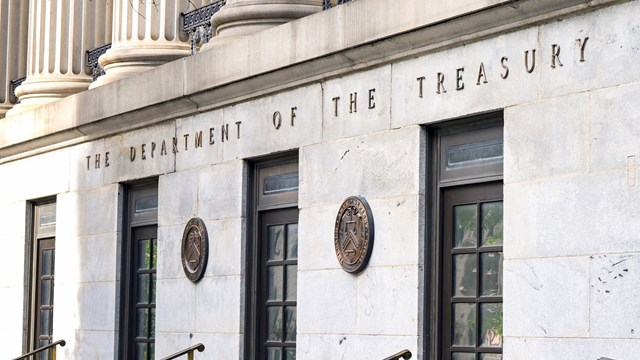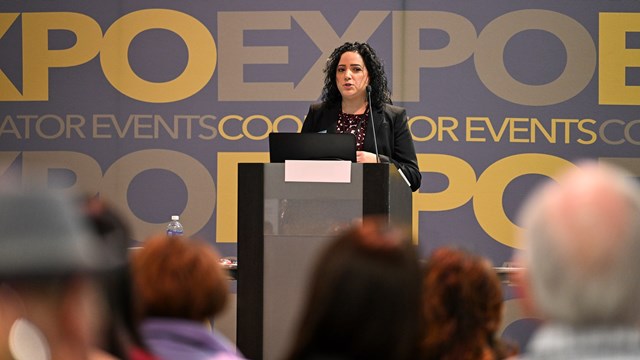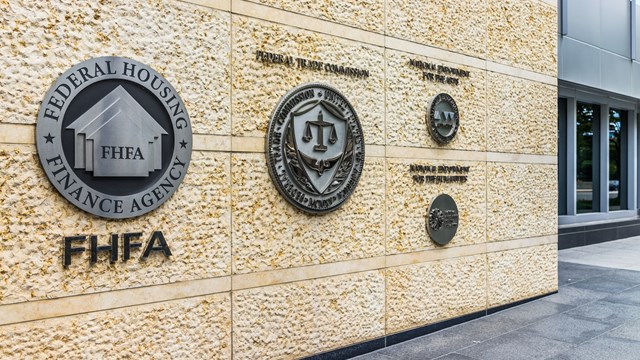Although most political watchdogs and legal experts cite the city and state budget woes as a reason for the slow legislative year, a number of important initiatives of interest to co-ops and condos are currently under review.
New York City Mayor Michael R. Bloomberg is grappling with a $5 billion budget deficit and considering various cost-cutting measures to help the city weather its fiscal crisis. As a result of the budget crunch, several legislative proposals and initiatives sought for years by the Council of New York Cooperatives and Condominiums (CNYC) and the Federation of New York Housing Cooperatives and Condominiums (FNYHCC), are, at the moment, off the table.
"This is a terrible budget year for both the city and the state," notes Mary Ann Rothman, executive director of the CNYC. Therefore, the Council is really not pushing hard for any of its prior initiatives, such as tax relief.
"Our top priority continues to be fairness in personal property taxes. The present abatement extends to June 30, 2004. It seems a long way away but it truly isn't," she continues. So over the next year, CNYC will focus on getting meaningful tax relief enacted. "Come winter, we really have to get started," says Rothman, about the initiative, which the Council began back in 1990, when it formed The Action Committee for Reasonable Real Estate Taxes. The current abatement plan grants a 25 percent reduction in taxes to owners of apartments in buildings where the average assessed value per unit is $15,000 or less and a 17.5 percent reduction to owners of units in buildings with an average assessed value of more than $15,000. To be eligible for a rebate, the unit must be one's primary residence, and one must own no more than three units.
"We'll need the city to devise a plan - a plan for tax fairness, which the city agrees upon and which we like. Next year will be a year where we really hope we'll be successful in this," says Rothman.
In 1993, former Mayor David Dinkins empaneled a blue ribbon commission to study property tax disparities and what they found certainly did not surprise the CNYC or its resident members.
"It's not only perception but true that co-ops and condos pay three to five times more in property tax," says Rothman. "We're hoping that the city will devise a more complex plan that will be able to really address most of the inequities."
She understands that the city's budget problems take precedence over their proposals and about half of the disparity has already been abridged. However, "we've never said co-ops and condos should be favored at the expense of the private sector. We should be paying our fair share and gradually delay any progression that leads to an inequitable situation."
FNYHCC executive director Gregory Carlson attributes some of the legislative inactivity in Albany to redistricting. "In New York State, there is really nothing much going on. It's going to be a quiet year legislatively in New York State. This year is a New York state and Congressional election year. They're losing a couple of seats. The districts are redrawn, so now, these people have new constituents," Carlson says. Additionally, now that the state's $89.6 billion budget has been approved, legislators will be eager to hurry back home to get on the campaign trail, he says.
One of the more interesting debates will be over just how stringent the city's lead paint laws should be. Following the recent reversal on March 26th by the New York State Supreme Court, Appellate Division, of a previous higher court ruling, the current law, Local Law 38, remains in effect. In 1960, New York City was the first municipality in the country to ban the sale of lead paint products. The rest of the nation followed suit in 1978. Local Law 38, which was passed by the City Council in 1999, basically monitors renovation projects by prohibiting dry scraping or sanding in any dwelling unit; requires landlords to regularly inform tenants about lead safety guidelines and inquire about the residency of children under age six; requires building owners to apply safety precautions when preparing all vacant units; and requires annual apartment inspections in which families with children under six live. However, the law limits violations to peeling lead paint and lacks provisions calling for the monitoring and removal of lead dust. Additionally, while an owner is required to correct lead paint conditions, there is no mandatory time frame in which to do so. The City Council seeks to abolish Local Law 38 and replace it with a stronger lead paint law.
The Childhood Lead Prevention Poisoning Act (Intro 101) was recently introduced by Deputy Majority Leader Bill Perkins, D-Manhattan, who also announced the start of a citywide campaign to raise awareness about lead paint poisoning and prevention efforts. Many of the city's older housing stock contains lead paint, which can be toxic to young children. When lead is ingested or inhaled, it can build up in blood, bone and soft tissue. Lead-poisoned youngsters can suffer from learning disabilities, shortened attention spans, behavioral disorders, anemia and other metabolic imbalances. Experts say that the damage can often be permanent and irreversible and it is estimated that some 35,000 children have elevated lead levels in their blood.
A large number of Council members are signed on as bill sponsors and the legislation also has the backing of the New York City Coalition to End Lead Poisoning (NYCCELP), a Manhattan-based legal advocacy group. "I am thrilled that so many of my colleagues in the Council have joined this effort to protect thousands of children from the preventable dangers of lead paint poisoning," says Perkins. "This bill has been overwhelmingly approved by countless medical experts and labor advocates, demonstrating its broad-based appeal and merit. The Council now has a real opportunity to repair and resolve the mistakes almost three years ago; it's just the right thing to do."
Co-sponsor Margarita Lopez, D-Manhattan, said the legislation is necessary because children are innocent victims of this building hazard. "What's equally alarming to me and many of my colleagues is the high incidence of child lead poisoning in communities of color; close to 90 percent of children poisoned by lead are Black or Latino," Lopez claims.
The presumption of lead dust as a health hazard is an improvement over Local Law 38, says Council member Christine Quinn, D-Manhattan. "New York City is 15 years behind the rest of the country because we do not even recognize lead paint dust as a hazardous toxic. Now we can finally catch up and protect the people who need it most - our children."
Intro 101 calls for speedier remediation and tougher enforcement, says Perkins. It also extends provisions to public schools and day care facilities and calls for the removal of lead-based painted playground equipment.
"Once lead paint is detected in an apartment, the hazards would be remedied within three months - a dramatic improvement to Local Law 38, where violations can go uncorrected for almost a year," Perkins says. "If a landlord fails to act, this bill mandates that the City correct the problem and charge the landlord for the costs, thus putting the onus on the owner of the building."
Deeming it a crucial initiative for his membership, Carlson is following the bill closely, but he thinks it might be losing the support it needs for passage. Under Local Law 38, the responsibility for monitoring and correcting violations for lead paint falls on whoever is identified in the governing documents, whether it be the building owner, manager or a board. "Intro 101 leaves all that out and puts the onus on the owners. When you say owner in co-ops and condominiums, it means the board," he says.
In a similar vein, there is also discussion in Albany on a bill that would establish a state program of accreditation to train and certify personnel to perform lead-based paint remediation and removal activities.
Another bill of interest to residents that is before the City Council is Intro 115, which would establish a tenant's bill of rights. This local law, if enacted, would set out rights and responsibilities of building managers and owners to provide a safe, secure, sanitary dwelling unit with adequate heat, hot water, and properly scheduled maintenance.
As part of his effort to reduce city expenses, Mayor Bloomberg has proposed a tort reform package, (Intro 193) in which several components directly affect building owners. The legislation, which was introduced late last month in the City Council, takes aim at sidewalk liability and repair and the multi-million dollar payouts that result from accidents involving sidewalks and roads.
According to City Corporation Counsel Michael A. Cardozo, the Adjoining Landowner Liability Bill, or more commonly, the sidewalk bill, will hold building owners liable if they fail to comply with their existing duty to repair and maintain the sidewalks in front of their buildings, and also to shovel snow and remove it in winter. As the law under Section 7-210 of the Administrative Code, currently stands, says Cardozo, tort liability is only imposed on the City if a landowner fails to comply with his or her responsibility to maintain the sidewalk or make proper repairs, giving landowners little incentive to keep their sidewalks safe. If passed, the bill is hoped to save the city's budget up to $37.5 million a year in damages. One-, two- and three-family homes would be exempt. This bill, says Cardozo, would prevent cases such as Johnson v. the City of New York, in which a woman who tripped on an apparently flawless sidewalk won a $2 million verdict. The award was later reduced and $1 million was paid out with interest, according to Cardozo.
"The City's tort payouts are larger than the budgets of most City agencies," states Mayor Bloomberg. "In fact, they are bigger than the budgets of most municipalities in New York. In 1978, the City paid out $21 million in tort payouts. In 2001, the number had skyrocketed to more than half a billion dollars. This money could be far better spent on social issues, including better schools, new teachers, more firefighters and police officers, and improving our infrastructure, especially as the City faces a fiscal crisis."
Tort reform is essential if any cost savings are to occur, Cardozo says. "The crisis is real. More than 14,000 claims are filed against the City each year and 9,000 lawsuits are commenced. The City also has 47,000 pending tort lawsuits."
The package also highlights other areas of reform and ways in which liability is lessened and awards can be reduced. A second amendment under consideration by the City Council is the Prior Notice or The Big Apple Map Amendment. This amendment is proposed to ensure that the City receives prior written notice to inspect any sidewalk or road defects. Current law requires that the City have 15 days prior written notice of any defect before liability can be imposed if an accident were to occur. According to the Mayor's office, a company created by trial lawyers called the "Big Apple Pothole and Sidewalk Corporation," has contracted with Sanborn, a map company, to produce "squiggles" on maps to indicate defects. However, Sanborn pays surveyors to walk the streets, often without formal training in what constitutes a defect. Big Apple also admittedly does not conduct any inspections to ensure the maps are correct. In the maps that the City received in 2001, more than 700,000 "squiggles" were denoted. Under the mayor's amendment, the individual inspector would be required to file a detailed report, including the specific location, nature, size and severity of the defect. False reporting would constitute a crime, and the amendment is intended to give city officials more meaningful notice about what potential hazards exist.
Three other bills have been proposed in Albany as well. A bill to prevent double recoveries by plaintiffs in awards against the city, a bill requiring no recovery if the plaintiff is predominately (more than 50 percent at fault), and a bill requiring that defendants only bear proportional responsibility for a plaintiff's injuries. Thus, if New York City is found only ten percent responsible for an incident or accident, it should only be required to pay ten percent of the damages. The remaining burden would fall on the responsible party, whether it be an outside individual, a landowner or building owner, according to the mayor's office.
"The law should put one back to where he or she was before an accident but should not enrich someone, the law should create incentives for landowners to maintain their property and rational guidelines for the City to gauge if repairs are necessary and the law should hold defendants responsible for only their equitable share of fault and plaintiffs responsible for their own actions," Cardozo says.
FNYHCC President and Board member Albert Pennisi, an attorney with Pennisi Daniels & Norelli, says the mayor's tort reform proposals seem reasonable but may unduly burden managers and building owners. "At first read, it sounds reasonable," he says of the Adjoining Landowner Liability Bill. "But the sidewalks are used by the general public and it is tantamount to public property. It is public property and the city should have some responsibility," he says. New York City, he explains, can require a building owner to hire a contractor to fix a sidewalk they deem in need of repair and charge for such repair. So ultimately the city has responsibility for sidewalk maintenance, he says.
Building owners would be affected in that the public is using a sidewalk for which they now, not the city, would be held responsible, he says. Another ramification, says Pennisi, could potentially be increased insurance rates, assuming that building owners were held liable for the repair and maintenance of public sidewalks that transverse their properties. As current policies expire, renewal rates are already increasing over 100 percent due to the effects of September 11. Exposure to tort liability could send rates skyrocketing.
Carlson agrees. "For the most part property owners, especially the cooperative and condominiums represented by the Federation, have borne the responsibility of keeping their sidewalks hazard free. Introducing tort reform requiring property owners to share in multi-million dollar court decisions is unreasonable."







Leave a Comment